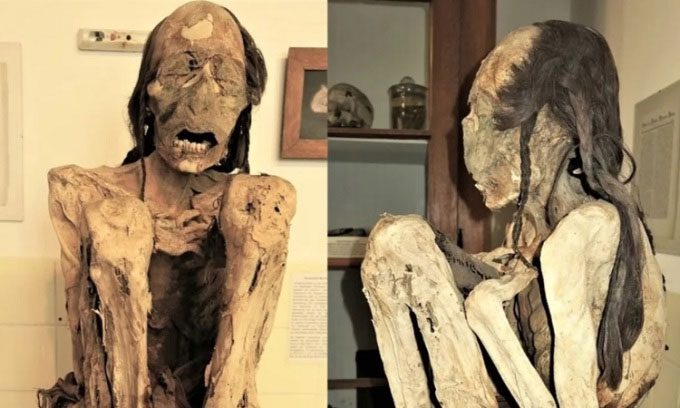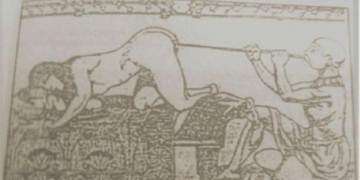A group of German researchers analyzed the mummies of two South American men and concluded they were murdered over 1,000 years ago.
The researchers from Bogenhausen Hospital in Munich discovered the cause of death of the mummies after examining the remains using 3D computed tomography (3D-CT). They determined that one individual died from a blow to the head and a stabbing, while the other suffered a spinal injury. A third mummy belonged to a woman who died of natural causes, with bone damage likely occurring post-burial, according to Dr. Andreas G. Nerlich, a co-author of the study.

Mummy of a man at the Marburg Museum. (Photo: A-M Begerock, R Loynes, OK Peschel, J Verano, R Bianucci, I Martinez Armijo, M González, AG Nerlich)
The findings reveal important historical information about the prevalence of violence in prehistoric societies. Most previous studies on evidence of injuries in pre-Columbian remains focused on skulls and other bone fragments. However, scientists can obtain more information from soft tissue preserved through mummification. This process can occur naturally in arid environments common in southern South America, as body fluids dry out faster than decomposition. The researchers published their findings on September 9 in the journal Frontiers in Medicine.
One of the mummies studied is housed in the Anatomy Museum in Marburg, Germany, while the other two mummies are located at the Delémont Museum of History and Art in Switzerland. The Marburg mummy belongs to the Arica civilization in present-day northern Chile, and burial artifacts indicate that the man was part of a fishing community. Based on skeletal features, the research team estimated he was a young man aged 20 to 25 years, approximately 1.72 meters tall. He was buried in a squatting position, and several intact teeth suggest wear typical in individuals whose primary food source was maize.
While the man’s lungs showed scarring from a previous severe tuberculosis infection, researchers believe the cause of death resulted from violent behavior. After the 3D-CT analysis, they concluded that the mummy died from a fatal blow to the head and a stab wound to the back while standing or kneeling. The injuries were inflicted by one or two assailants around the years 996 to 1147, according to carbon dating results.
The two Delémont mummies may originate from the Arequipa region in present-day southwestern Peru, based on pottery found among the burial goods. Both mummies were laid on their backs, which is unusual for mummies from the Andean highlands. They were dressed in clothing made from cotton, camelid fibers, and vizcacha fur.
Radiocarbon data indicate that the man died around the years 902 to 994, while the woman died between 1224 and 1282. The condition of the aorta and other major arteries revealed that the man had atherosclerosis while alive, but this was not the cause of death. Instead, he suffered a significant injury to his cervical spine due to violent behavior. Two cervical vertebrae were dislocated, causing immediate death. However, researchers believe the woman died of natural causes, as bone damage likely occurred post-mortem.





















































